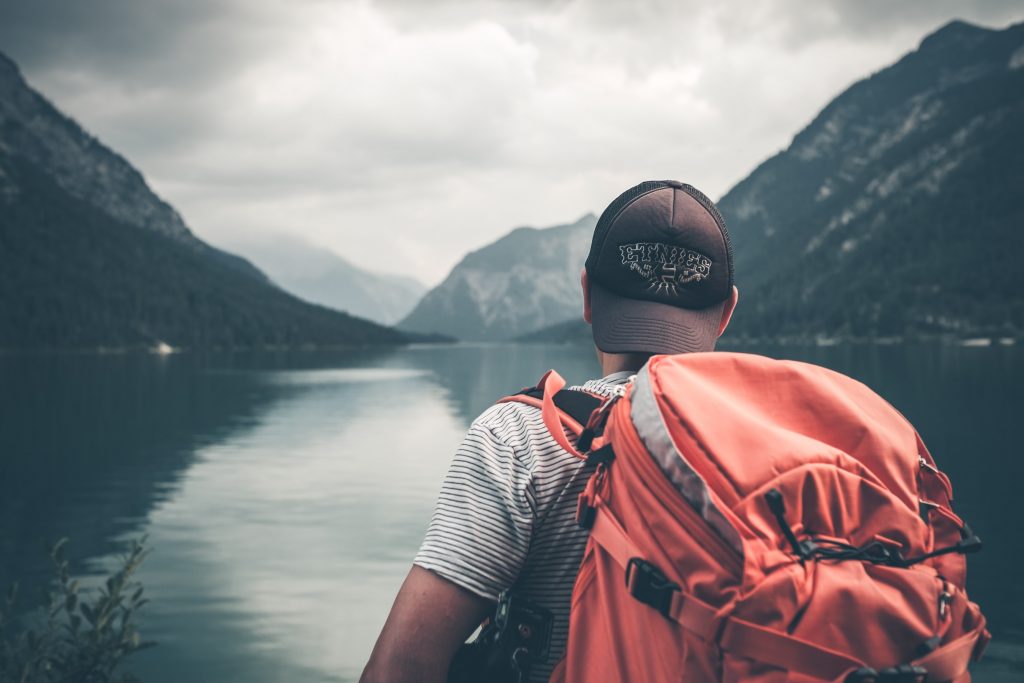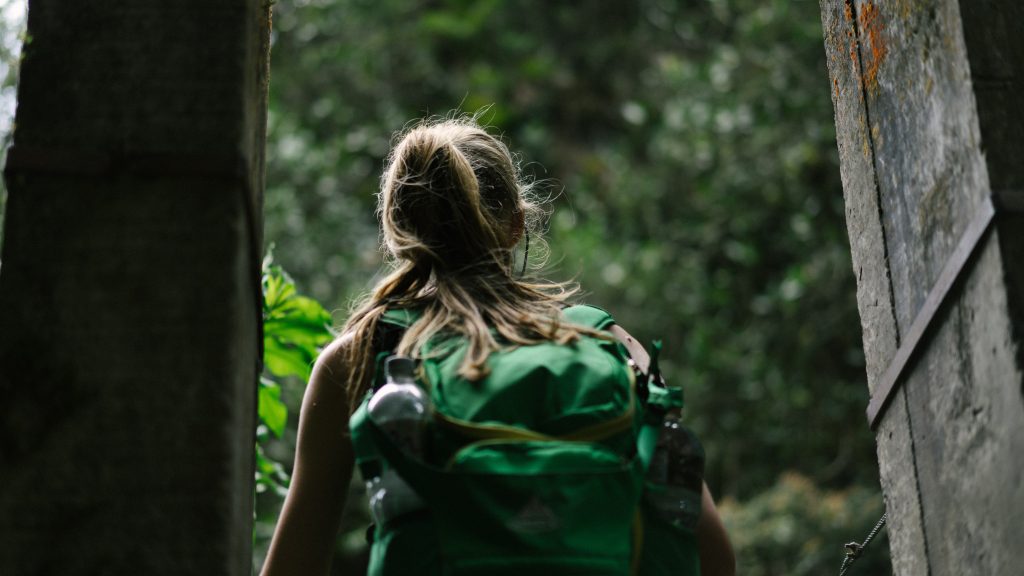A bug out bag is basically pack of survival items that you can easily carry around with, especially with the aim of reaching your bug out location. The bug out backpack has to be resilient and comfortable enough for you to carry around, at least for 72 hours. The main reason of having a bug out bag is so that you can easily evacuate if there’s a need.

To have the ‘BEST’ bug out bag, you need to have an awesome bag, and the bug out bag contents has to be planned as well. This would mean you need a comprehensive bug out bag list. Having a quality bug out bag is only half the battle, you need suitable survival gears and survival skills to face the situation.
Do note, you can further split this into categories too such as children’s Bug out bag or even a bug out bag for the elderly! There’s no hard and fast rule as to how you should pack your bug out bag, but I’ll raise some of the common items everyone should consider putting in their bug out bag.
In my view, there are some fundamental items your bag should contain, and you can customize your bag for different emergency situations.
Important Rules
The purpose of making a bug out bag list is so that you will have a clear idea of what you need (making a distinction between your wants and needs). Although we don’t know what the future holds, you can’t be bringing too many things. There’s no way you can carry it for long hours.
The goal is to keep only items that help you become self-sufficient, surviving various situations. You don’t need to stuff any fancy shmancy tools that you don’t use. With that said, let’s see what are the top items you need for your bug out bag.
1. Water
Water is placed number 1 because of its importance. Without getting proper water supply, your success of surviving a bug-out situation will drastically decrease. I would suggest prioritizing the need to get good water supply before even thinking about food. Especially if you are caught in hot weather, you may suffer from dehydration.
Water can be seen in 2 aspects, (1) Storage and (2) purification.
For Storage, you can use water bottles or even sealed pouches. The water bottle you choose should be solid and has no paint or coating.
Ideally, you should keep 3 liters of water in your bag because it’s suggested that one adult should drink at least 1 liter of water per day. Since you are aiming to survive for 72 hours, you’ll need 3 liters.
You can even get a Platypus Bladder, where most of them has holsters for a bladder container which you can use to store water and drink from it. Make sure to get one that is easily collapsible so that you can store it with ease when you are not using it.
For Purification, you can keep some iodine tablets or some other device to filter the water.
You need to pick your water purification tablets wisely because there are a huge range of products in the market, manufactured for different needs. For example, some tablets are made to purify water you obtain from rivers.
Alternatively, you can pack water filters such as LifeStraw. They are often compact, which makes packing them easy.
To kill two birds with one stone, I would suggest storing a backpack stove because they are an excellent tool for cooking water and food. Let’s be real, it’s extremely time consuming to get an A-frame logwood to ignite. This would be highly dependent on your surroundings as well, if the temperature is cold or its drizzling, the probability of you successfully setting up a campfire would fall drastically.
Since water is heavy, you need to consider how to balance the need to pack clean water, and getting water purifiers as substitute.
2. Food
Next, you may want to ensure that you have enough food supply. There are several criteria to consider, including how long the food can last, how much energy content does it contain and what nutrients it has.
You definitely need to keep some food supply packed in your bug out bag to keep your body healthy and obtain stamina. You should definitely consider the weight of the food as well.
If you live in a rural setting, you can consider packing hunting gears so that you can hunt animals as a source of food when you are en route to your bug out location.
If you don’t want to make things complicated, you can just get any energy bars that is jam-packed with calories. If you want to be more careful with what food you pack, you can check out this list of food which I recommend having:
Energy bars – It’s important that you distinguish between a food bar, a ration bar and even a candy bar. Candy bar is self-explanatory, so I’ll skip that.
Ration bars are often packed in mylar, which are made of a combination of flour, vitamins and electrolytes. Ration bars usually have a bland taste, made to address a particular emergency situation.
Since there are many types and flavors in the market, you need to test them out to see which one you like. You can check out Mayday Apple Cinnamon Bar which come in individual packets and they come with specific flavours. Or, you can even choose the Datrex 3600 Food Ration Bar which comes with multiple bars with each sub-packaged to ensure freshness.
Some do not consider this as food for your bug out bag because they are designed to save lives (such as being stored in lifeboats). But to me, they are fundamental items you should store as well.
For Food bars, they are portable bars which taste better than ration bars. Most of them taste like candy or even cookies. These bars are made to give you energy and sufficient nutrition as well. However, ration bars tend to give more nutrients because they are ‘made’ that way.
You can check out Clif Bars to get food bars that have a good source of protein and fiber.
MREs – Meals Ready to Eat (MREs) or “wet food” often taste better than energy bars. Also, most MREs are made to last for years. If you would like to prioritize long-term storage, MREs would be your top pick.
However, your body may have some reactions to MREs if you are not used to consuming them. This can be solved by getting your body used to it.
Dehydrated Food – Dehydrated foods are excellent for long-term storage but they are a bit pricey. Dehydrated food requires a reasonable amount of water to re-constitute, which cause you to use-up some clean water-supply.
Mountain House is THE company to look out for when it comes to dehydrated food. They are known for producing survival food kits and dehydrated food that taste awesome!

3. Clothing
Clothing comes hand in hand with shelter, because both of them are aimed to protect you from external elements.
Although there are various disaster scenarios that you may be caught in, you can still reasonably predict what environment you will be in when Shit Hit the Fan.
To make your thought-system more systematic, you can think of what layer of clothing you need to pack for.
For myself, I would like to see it as Base Layer Clothing, Mid-layer clothing and outer-layer clothing. Each layer has different functions and purposes.
The base layer is meant to keep your body as dry as possible. This means that getting a fabric that easily absorbs moisture would be ideal. Keeping your body dry throughout the bug out scenario is important to avoid bacterial growth and it helps keep you comfortable. I’ll suggest that you use cotton or wool for base layer clothing.
For mid-layer clothing, its purpose is to help maintain your body temperature. Therefore, it’s important that you get a mid-layer clothing with good insulative qualities. For this layer, the materials which you can look out for is cotton, wool and fleece.
The Outer layer should be waterproof and durable but allows moisture to escape. One excellent material you can consider is jackets that are coated with membrane.
With that said, here are some general ideas for what clothes you need to pack – spare clothes, long pants, coat, boots, extra socks, mid-layer shirts and a hat.
4.Shelter
In your bug out bag, you need to include some type of shelter to protect your body from external elements. You can either pack a tarpaulin sheet, a tent or a sleeping bag.
Tents are really comfortable to be in, but they are heavy and bulky. Try to get a tent that weighs less than 5 lbs so that you won’t go overboard on the weight.
If you are looking for something more portable, you can opt for tarps. Since you can set them up into different configurations, they are definitely more feasible to be used in most situations.
Since ‘shelter’ include anything that protects your body from external elements, it will include fire starting kits as well.
A general list of items you can consider include a space blankets (first aid blankets), poncho, Tarp, sleeping bags and tents.
As for a list of items to help you maintain surrounding heat., you can consider getting a firestarting kit, single Burner Folding stove, hand warmer and windproof torch lighter.
Shelter is important because exposure to cold temperature for long hours can kill you. If you stay in a place with extreme weather, you need to take shelter SERIOUSLY. For cold weather, you will need to find ways to create heat sources so that you can retain your body heat. Make sure you don’t lose your body heat unnecessarily.
If you live in an area with warm weather, you may have to consider bringing more water and packing more loose clothing.
5. Medical Supplies
Getting ready a first aid kit in your bug out bag is a MUST-HAVE. Usually, they won’t take up a lot of space.
Medical supplies are highly personalized, so you need to mull through what you need to use. This includes going through what are the potential diseases that you will likely contract.
To do this, you need to know what are the injuries that you will most likely face in a bugging out situation. There are various categories of injuries including Traumatic injuries, burn injuries, minor wounds, mobility injuries, infectious diseases and your individual medical needs.
To understand your individual medical needs, you need to go through a personal screening by talking to your doctor and ask what are the medicines you need.
Generally, it’s important to include some basic items such a bandage, disinfectants and scissors. Other items you can consider are Tourniquets, Israeli Bandages, Hygiene Kit, Wet Naps or even ThyroSafe Potassium Iodine Tablets.
To Sum Up
I hope that the bug out bag list has helped you consider different aspects as to what you should pack. This list is aimed to help you create a new bug out bag list, which is definitely not an exhaustive list. Feel free to give your suggestions in the comments on what to add in the list.
Bear in mind the important factors when considering which items you want to store in your bag. Be sure to take into account other considerations too such as what location you live in, what bug-out skills you have, what are the likely threat you will face and how many people you need to protect. With all these factors considered, I am sure your success of surviving a calamity will drastically increase.
By Peter Betts

